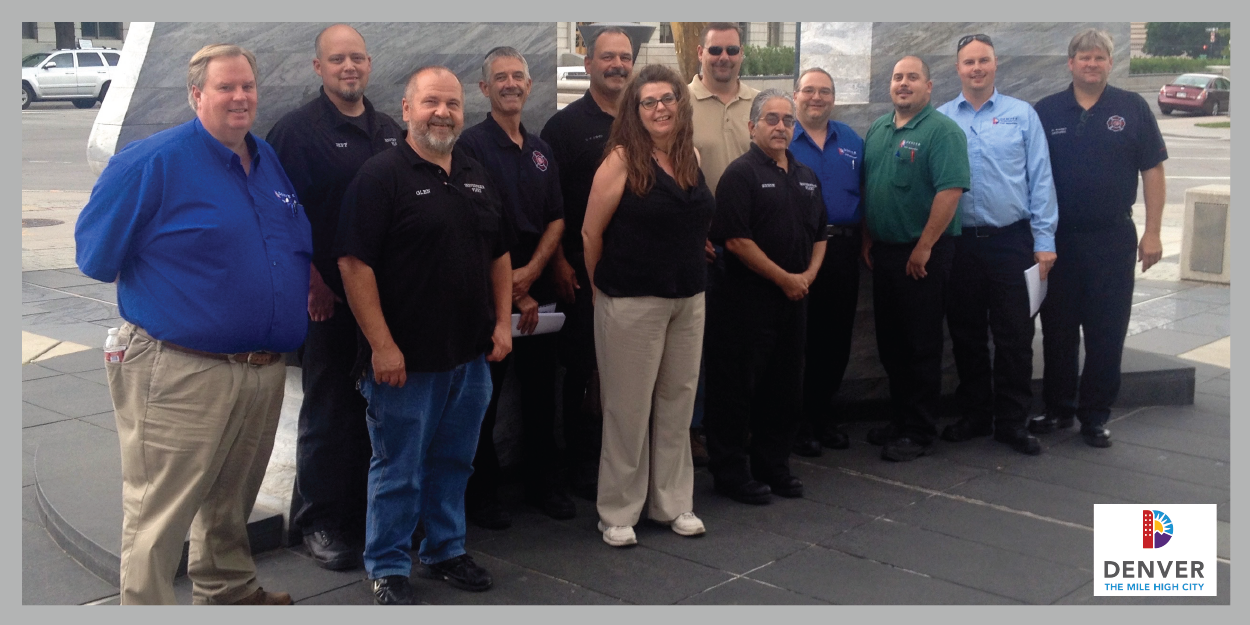Public Works Fleet Management, Police Fleet, Fire Fleet:
Fleet Analysis and Optimization Project (FAOP)
From the initial meeting of the Fleet Analysis and Optimization Project (FAOP), which looked more like a middle school dance (each fleet in their own ``pods``), to the end of the project where the TEAM was operating seamlessly, transparently, and eagerly, the FAOP delivered more than 300% more benefit than the City anticipated.
Denver’s Fleet Challenge
Fleet services within the City and County of Denver exist to ensure other divisions can do their work without disruption. Critical city services such as emergency response, new construction, infrastructure integrity, and public safety all owe their accomplishments, in part, to the people of fleet services. Fleet staff directly support the City’s work by ensuring consistently accessible, functioning equipment.
As one of the 100 best fleets in America, The City and County of Denver’s fleet prides itself on identifying and enhancing efficiencies of its fleet management operations. These operations have been studied many times over the past decade or so, with each study designed to identify opportunities for optimization and efficiency improvements.
Prior to the FAOP, all previous studies were focused upon realizing financial benefits, dedicating significantly less attention to service-related optimization recommendations. For that, and other reasons, few of the recommendations from previous studies have been implemented. To rectify this situation, the executive directors of both Public Works and the Department of Safety obtained support from the Mayor’s office to conduct an internal, employee-led organizational assessment – this time from a mission-primary perspective.
Thus, the FAOP was conceived, and Team Tipton was engaged to design and facilitate this effort.
Our Solution
The Fleet Analysis and Optimization Study (FAOP) was a concerted effort for Denver fleets to actively respond to the need to operate efficiently and cost effectively. This report represents a summary of the fleet’s examination of its internal operations with attention to improve partnering/sharing across the shops and processes, and to leverage external optimization whenever practical. It must be said, however, that though the focus was on cost optimization, the sites never strayed fleet’s mission critical role.
The objective of the current study is to identify financial savings with no adverse impact to the agency’s missions. The FAOP was chartered with three primary drivers.
1. Find opportunities for efficiency and cost optimization
In line with its obligations to continually identify and enhance its operational efficiency, Denver fleets engaged in this study to find opportunities for cost optimization wherever possible – within each fleet, across all the fleets, and outside of the fleets (through privatization). Five major dimensions of optimization were examined as part of this FAOP, but this report focuses on External and Internal Optimization and Partnering/Sharing opportunities.
2. Cause no adverse impact to missions
It is intended that no recommendation related to optimization, efficiency, etc. will cause adverse impacts to the missions of the agencies served by DPD Fleet, DFD Fleet and PW Fleet.
3. Ensure savings are retained to support fleet replacement
All hard dollar savings and “repurposed capital” related to External Optimization and Partnering opportunities identified by the FAOP will be retained by the Fleet Managers as a means to provide support to the critical, unsustainable fleet replacement funding challenge.
Outcome / Benefits
The Fleet Analysis & Optimization Project identified opportunities to save more than $16 million as well as identifying areas where process improvements and cross-fleet collaboration could substantially improve operational efficiency over the next five years without detracting from its mission-critical services.


